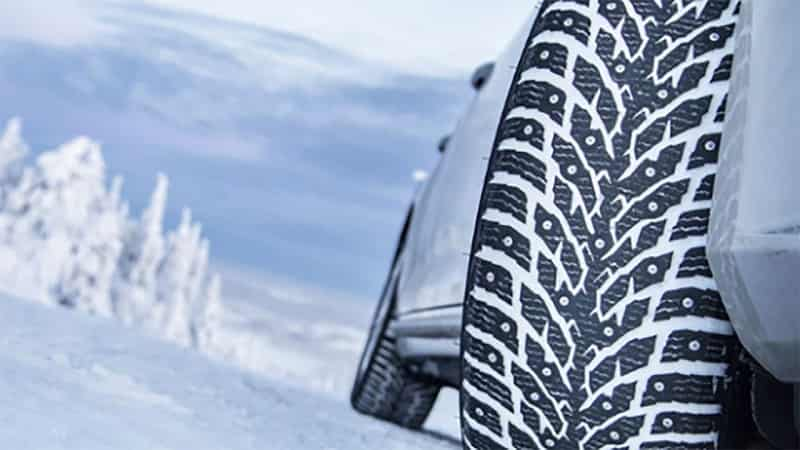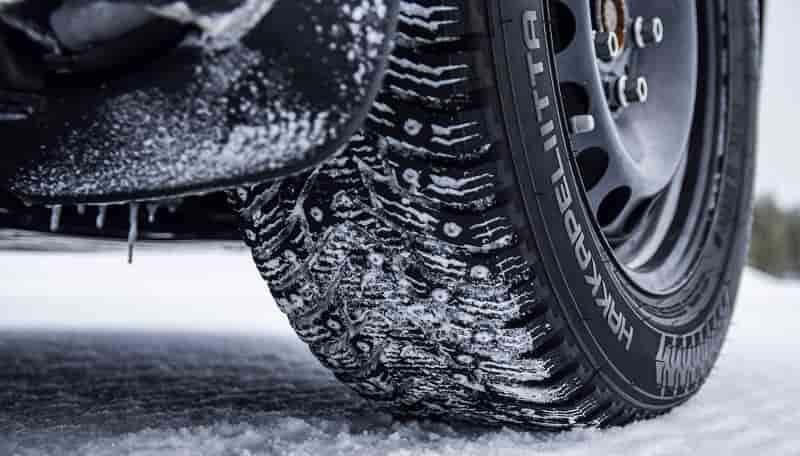"Do you need studded winter tires?" It is a question many drivers ask. So, what is the reason that you should use this tire? The article below will answer all your questions.
If you often have to travel in extreme weather conditions (heavy snow, long winters, freezing), you should buy your car studded winter tires. This type of tire not only provides outstanding traction but also helps you to adjust the brake.

Contents
Do You Need Studded Winter Tires?
Why do you need studded winter tires? The reasons below will show you the importance of studded snow tires in difficult weather conditions.
1. Studded Snow Tires in Heavy snow
Snowfall can cause some problems for drivers, especially frozen snow. This type of snow is very long and forms large clumps. When passing, they will stick to the tires and cause slippery.
In addition, the longitudinal grooves on the tires are very prone to clogging. If this situation continues, the tires will harden and no longer be able to go.

So studded winter tires are a great choice in this regard. This tire surface has deep metal pins to ensure balance. Moreover, the tread has a unique design to cover the snow while ensuring flexibility and strength on the road.
Even if the area you live in is delicate and melting snow, it's a good idea to equip your car with studded snow tires.
2. Studded Winter Tires in Ice Conditions
The ice roads cause a great hindrance when driving. Studded winter tires were born to solve this problem.
Brake
According to some tire test results, studded winter tires play their part. At 30 kilometers per hour in freezing winter, studded winter tires can stop at a distance of 22.6 meters, and the meter of non-studded tires is 27.2 meters. Meanwhile, the all-season tires stop at 34 meters.
Thereby, any driver can see that studded winter tires offer outstanding balance and fantastic flexibility.
The Bends
Conventional tires have studs in rows. However, studded winter tires have a more distinctive studded design. They are spread all over the tire to ensure the friction of the tire with the road surface. In cold weather and covered with ice, this design is essential.
Ice Lurking Places
In winter, it is often darker than usual, especially in the passes. This place often has a lot of black ice because of the darkness covering the whole day and the lack of sunlight. You should know that black ice is much more dangerous than ice.
Besides, studded snow tires are incredibly suitable for terrain near rivers or coastal areas. These are foggy areas that freeze over the road. If the weather is too cold, urban roads can also be frozen and you may be in danger if you don't use studded snow tires.
3. Studded Winter Tires in Harsh Winter
Non-studded tires are only suitable for areas with mild climates, such as short winters or dry air. Those who drive in the long winter need to equip their car with studded winter tires. As mentioned above, this tire is designed to withstand the road filled with snow and ice.
The Advantages of Studded Winter Tires
1. Guaranteed Grip and Traction
Numerous reports have demonstrated the outstanding advantage of studded winter tires over non-studded tires. You can fully count on the solid grip of this tire, especially on roads with thick ice and hard snow.
Any four-season tire will not have the same level of friction as studded winter tires. Thanks to a special and unique tread design, this tire has such good traction.
2. Outstanding Handling Ability
Besides the perfect grip, the studs on studded winter tires easily pierce stubborn roads, high rainfall like solid anchors.

If you brake hard at high speed, the combination of studs and durable tire material will firmly grip the ice on the road. From there, the car does not slip long, and you are easier to handle.
How Do Studded Winter Tires Work?
Typically, manufacturers use tungsten carbide to make studded winter tires studs. This sturdy metal weighs between 1.7 and 1.9 grams. Studs are installed that protrude from the tire surface by about 1.5 mm.
To be able to fit the studs into the tread, the manufacturer will mold the fitting holes. Rivets work best only when they are fitted correctly, not too deep or too shallow.
When a tire has a stud that is too deep, the outer protrusion cannot come into contact with the tread surface to ensure traction. Conversely, the casting hole will widen if installed too shallowly, causing the protrusion to wobble and fall off.
In addition, many people adjust the protrusion length of the studs when the tire is worn to ensure its performance. With these unique studs, studded winter tires can efficiently run on ice and still grip the road.
The Uniqueness of Studded Winter Tires
As noted above, you know that studded winter tires are suitable for extreme weather such as heavy snow, ice. Road conditions are more unpredictable than ever. Not all tires guarantee their ability to grip the road in low temperatures.
Therefore, studded winter tires are a great companion in these weather conditions. Soft rubber material with unique studs for better friction. The special design of studded winter tires also helps them reduce snow accumulation in the treads.
Conclusion
The degree of frost on the road is one factor determining if driving in the winter is scary. Depending on the weather conditions, you can decide for yourself which tire to use.
But best of all, studded winter tires can remove obnoxious obstacles you did not anticipate. Hopefully, this article has given the correct answer to the question: "Do you need studded winter tires?" for you to make the best decision.
I’m Ivo Gievski, the content writer for Tireer. We built our website with over 15 years of experience and extensive research in the automotive and technology sectors. My dedication to delivering high-quality content is unwavering, and I strive to continuously hone my skills to stay ahead of industry trends and provide readers with informative, engaging, and valuable insights.